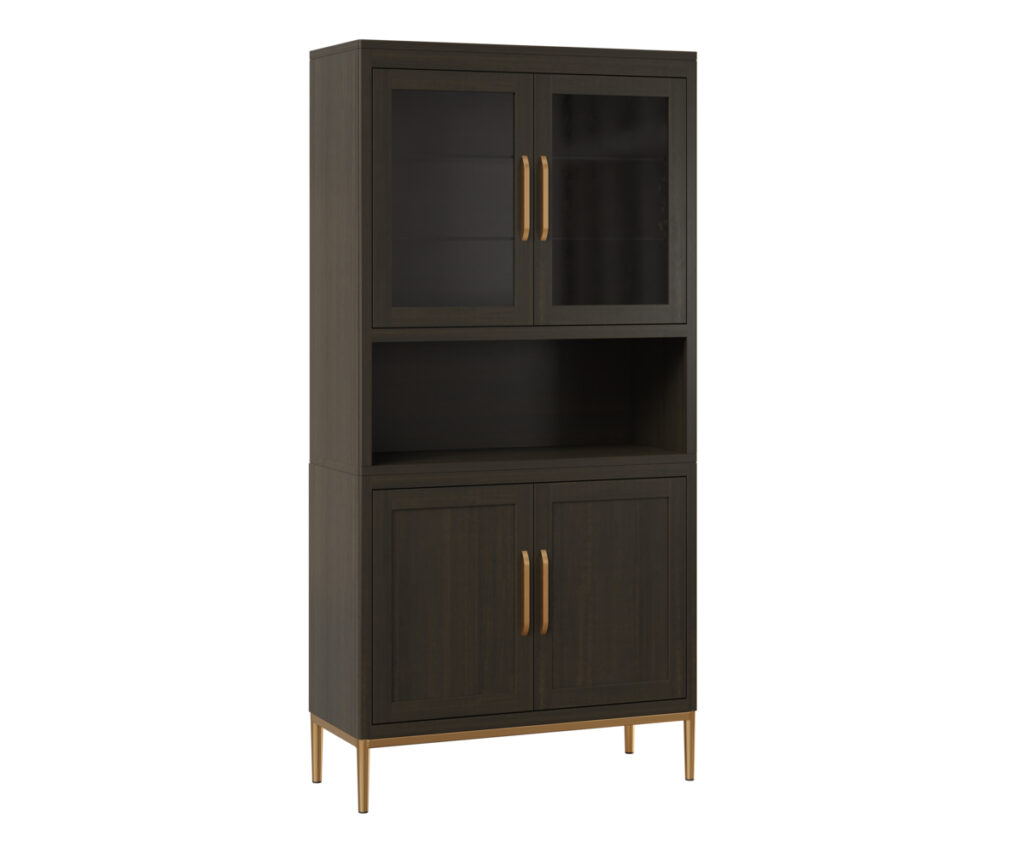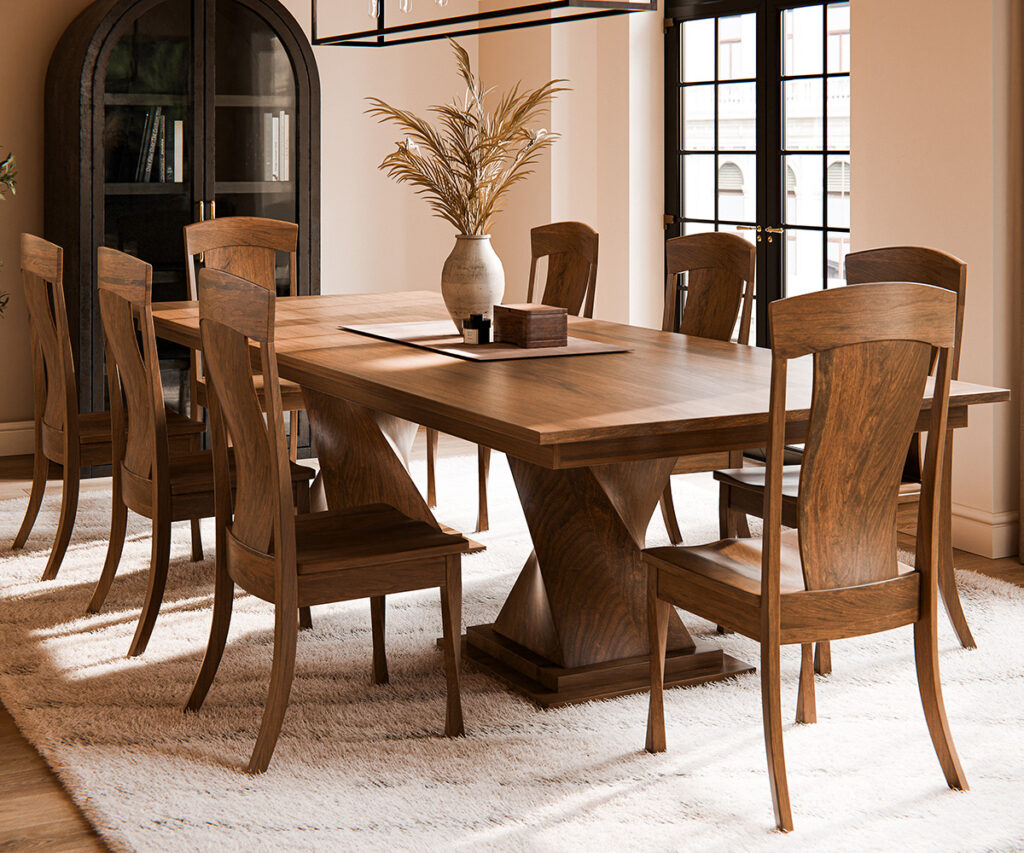The dining room may be one of the most underappreciated rooms in the home, but it shouldn’t be. Whether you’re hosting a holiday meal, gathering for weeknight dinners, or simply sipping coffee while reading the news, this space fosters connection. And yet, creating a dining room that works well for your life involves more than just placing a table in the center and calling it a day—dining room layout tips can make all the difference in creating flow and function.
When you measure your space, choose the right table, and style the lighting and décor intentionally, every decision contributes to the room’s overall success. Looking for practical guidance? These dining room layout tips can help you make the most of your space. With a few thoughtful choices, your dining room can become one of the most inviting and functional areas in your home.
Understanding Your Space

To design a dining room that comfortably supports guests, family, and cleanup, begin by assessing the size and shape of your space. Take accurate measurements and consider how many people you plan to host regularly, as well as during special events like dinner parties. Knowing a few key numbers can simplify the design process. Most tables measure 36 to 40 inches in width. Guests typically need three feet of clearance behind their chairs to move around comfortably. Additionally, they need about two feet of table width per guest. Keeping this 2×3 feet block and the average table width in mind will help you determine how many guests your space can accommodate.
In addition to furniture dimensions, also consider the room’s shape and any secondary uses. If your dining room connects to other areas, include a three-foot walking path for seamless flow. If dining is its only purpose, prioritize symmetry in your layout.

The type of layout—open versus enclosed—also shapes both function and atmosphere. While older or larger homes often include dedicated dining rooms, newer or smaller homes typically merge dining with kitchen or living areas. Enclosed rooms serve well if spacious, but smaller ones can amplify noise. Still, they preserve ambiance when adults linger at the table and children head off to play.
Open-concept layouts offer a more casual, communal feel. They allow food prep and conversation to happen simultaneously. In undefined spaces, rugs or lighting fixtures can visually anchor the dining area. Applying simple dining room layout tips here can help establish a clear yet welcoming zone for everyday use.
Selecting the Perfect Dining Table

Even if you already have a table in mind, reviewing the pros and cons of various styles is still worthwhile. A helpful rule of thumb: match the table shape to the shape of your room.

If you frequently host large groups or have a large family, opt for rectangular or oval tables. These come in generous sizes and often feature built-in leaves for expansion. Oval tables work particularly well in tighter spaces—they lack sharp corners and improve sightlines, promoting better conversation. While nearly any style can be extended with expandable leaves, rectangular and oval shapes offer the most potential for seating.

For smaller gatherings, square or round tables work beautifully. Though they offer less seating, they tuck easily into compact rooms and enhance symmetry. These shapes also promote intimate conversation, making them perfect for relaxed dinners.
Material choice affects both function and style.
Consider your practical needs first.
- Glass tables resist heat and moisture, offering easy cleaning due to their non-porous surface. They enhance light and space in dark rooms.
- Metal tables deliver durability and are ideal for high-traffic zones. Metal fits a variety of aesthetics—from industrial to farmhouse.
- Marble provides top-tier heat resistance and timeless strength. Marble, with its elegant veining, brings in timeless charm. However, moving heavier materials like marble can be a challenge.
- Wood, which provides a softer surface, reduces the risk of damage from dropped dishes and works well in homes with children. It’s adaptable and natural, suiting nearly any interior.
Choosing Dining Chairs

Start by deciding whether to match or mix your chairs. Matching creates a cohesive, orderly feel. Mixing—now a popular choice—introduces a laid-back, eclectic energy. It also allows guests to choose what’s most comfortable for them. Some people mix and match to a limited extent. They might pair upholstered chairs at the head of the table with streamlined wooden side chairs.
Some people choose between upholstered and non-upholstered seating. Upholstered chairs usually offer more support and comfort but may wear out more easily and stain over time. Wood and other non-fabric options resist spills and provide easier maintenance.
Additional Dining Room Furniture Pieces

Including furniture beyond the table and chairs gives you more options for styling and hosting. Buffets, sideboards, and hutches store dishes, linens, and serving items efficiently. These pieces can also house espresso machines or other small appliances. Ensure your side pieces are at least as tall as the dining table to maintain visual balance.

You can choose from classic options, like the Adel Buffet, or opt for modern designs, like the Alexander Sideboard. Hutches, once considered dated, now come in updated styles. The Hammond Hutch offers warm Shaker charm, while the sleek Cora Rose provides striking modern contrast. Hutches are perfect for displaying anything like fine China, books, and decorative objects.

If you host frequently, consider creating dedicated drink stations. More than anything, serving drinks can require you to leave your guests. Wine servers and coffee bars make beverages more accessible. The Woodville Server and Bentley Display Cabinet combine modern design with practical wine storage. Meanwhile, pieces like the Millhall Coffee Bar keep supplies organized and ready for daily use.

In dining rooms that share space with kitchens, multipurpose furniture like chef’s workstations or expandable farmhouse tables can help make up for limited counter space.
Dining Room Decor and Styling

For many, selecting a color palette is the most enjoyable part of the design process. Let your furniture inform your color choices. Explore our Dining Room Collections to see how different wood tones pair with a variety of hues. Neutrals like ecru and cream offer soft, understated backdrops that highlight your furnishings. Taupe adds warmth and subtle dimension.
Pastel tones, such as soft yellow or blush pink, bring traditional charm, appearing bright during the day and cozy at night. These colors complement most wood finishes.
If you’re feeling adventurous, opt for a bolder backdrop. Cobalt blue adds vibrant contrast without overwhelming the room. Benjamin Moore’s rainforest foliage green brings in nature and works exceptionally well with gray or white furnishings. Dusty violet and muted burgundy also enhance wood tones.

Lighting plays a crucial role in both style and ambiance. Many homeowners choose between chandeliers and pendants. Chandeliers give a dining room dramatic focal points and lend elegance. They come in styles from ornate to minimalist, helping define the room’s tone. Pendants offer targeted lighting and fit well in casual or contemporary spaces. Wall sconces are a necessity for accent lighting, and layering the lights. To soften shadows, install wall sconces about five to six feet high.

Centerpieces and table settings let you easily update the room’s look. Swapping napkins or adding a fresh floral arrangement can shift the vibe from casual to refined. Candles bring elegance, while greenery brings the calm of nature.
Rugs help define the dining space, especially in open layouts. They also offer comfort underfoot and are easier to maintain than wall-to-wall carpet. Choose durable materials like jute, wool, or nylon to avoid stains.

Finish the space with wall décor. Dining rooms see daily use, second only to kitchens and bathrooms, so don’t leave the walls blank. Transparent shelving, such as saline displays, keeps the room feeling light while providing a place to showcase art, greenery, or treasured pieces.
Budget Considerations
Budgeting isn’t about limiting your creativity—it’s about matching your investments to your values. Focus your spending on what matters most to you. While everyone’s priorities will be different, here are some common budget priorities.
Spend less on items that require regular replacement, such as rugs, table linens, and placemats, which tend to wear out quickly due to daily use and spills.

Splurge on pieces built to last. Hardwood furniture, mainly when constructed with traditional joinery, can be repaired and even gain value over time. Avoid furniture held together with glue alone, as it tends to degrade rather than age gracefully.

Lighting is another worthwhile investment. Think of a unique pendant or chandelier as the jewelry of the room—it can tie everything together. Whether your style is bold or subtle, lighting should always flatter rather than shade.
Conclusion

A well-designed dining room balances beauty and practicality, creating a space that’s more than just for meals—it becomes a place for connection. By first understanding your room’s dimensions and flow, and applying practical dining room layout tips, you lay the groundwork for an efficient layout, whether you’re working with an enclosed space or an open floor plan. Choosing the right table and chairs based on your hosting style sets a strong foundation.
Material choices—such as wood, glass, and metal—affect not only durability but also ambiance. Add functionality with sideboards, hutches, or drink stations. Then layer in color, lighting, and accents to reflect your personality. When budgeting, spend wisely—invest in lasting items and enjoy the freedom to refresh more flexible elements. By thoughtfully planning in these areas, your dining room can become a stylish, functional hub for everyday meals and unforgettable gatherings.

 3D Shed Builder
3D Shed Builder
